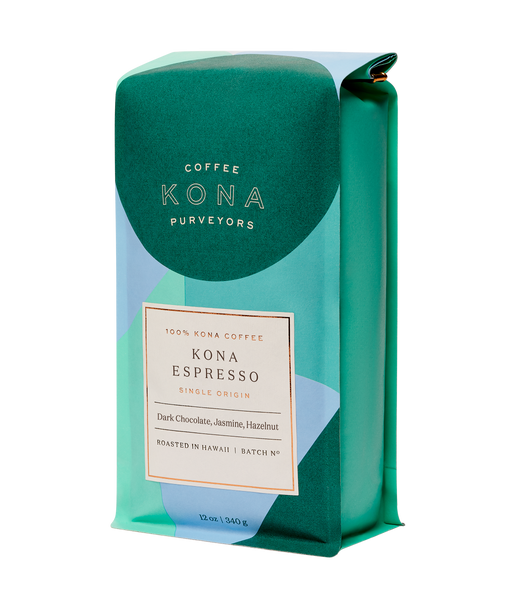How to Store SOE Single Origin Espresso for Maximum Freshness
How to Store SOE Single Origin Espresso for Maximum Freshness
Blog Article
Coffee Beans 101: Everything You Need to Understand About Espresso and Blended Coffee Beans
When it comes to coffee, recognizing the nuances of espresso and mixed beans can change your everyday mug. From the expanding process to toasting techniques, every step plays a function in your coffee experience.
Understanding Coffee Beans: Kinds and Selections
When diving right into the world of coffee, comprehending the types and selections of coffee beans is crucial for every lover. Arabica beans are recognized for their smooth, complex tastes and reduced caffeine material, making them a favorite amongst coffee fanatics.
Within these species, you'll discover various regional ranges, each bringing unique features. For instance, Ethiopian Yirgacheffe supplies intense floral notes, while Colombian beans provide a well-balanced flavor profile. As you check out, keep in mind to pay focus to handling techniques like cleaned or all-natural, as they can considerably affect the last taste. By familiarizing on your own with these beans and their tastes, you'll raise your coffee experience and make even more enlightened choices in your developing journey.
The Expanding Refine: From Seed to Bean
When you discover the trip of coffee, all of it begins with seed option techniques that set the structure for top quality. From there, growing and gathering play important functions in ensuring the beans grow. Lastly, processing approaches transform those collected cherries into the coffee beans you love.
Seed Choice Methods
Choosing the ideal seeds is crucial for producing premium coffee beans, as it lays the structure for the entire growing process. You need to start by selecting seeds from trustworthy sources that focus on top quality and genetic variety. Try to find ranges recognized to flourish in your details environment and soil problems. Take note of the seed's age and storage space problems, as fresh seeds often tend to sprout far better. When possible, go with organic seeds to lessen exposure to damaging chemicals. Take into consideration the condition resistance of various varieties, as this can considerably affect your yield. Don't be reluctant to seek advice from with regional farmers or experts to get understandings into the finest seed options for your area. This understanding will enhance your coffee-growing experience.
Cultivation and Harvesting
As you nurture your coffee seeds right into prospering plants, understanding the growing and harvesting procedure is vital for achieving the finest taste and top quality. Beginning by planting your seeds in well-draining dirt, preferably in a shaded location to safeguard them from direct sunlight.
When it comes time to harvest, seek ripe cherries, which generally turn a dynamic red. Hand-picking is commonly the very best technique to ensure only the ripest cherries are chosen. Timing is crucial; harvesting also late or also early can affect the taste account of your beans. Welcome perseverance and treatment, as this is where quality starts.

Handling Approaches Described
As soon as you have actually harvested your coffee cherries, the next crucial action is processing them to transform those vibrant fruits right into the beans you'll make. There are two main approaches: the damp procedure and the dry process. In the dry process, you spread out the cherries out in the sunlight to dry, allowing the fruit to ferment and pass on distinct flavors to the beans. On the various other hand, the damp process involves eliminating the fruit immediately and fermenting the beans in water, causing a cleaner preference. After handling, the beans are hulled, sorted, and typically dried out again. Each approach influences the taste account, so experimenting with both can aid you uncover your favorite brew. Understanding these methods is essential to appreciating your coffee experience.
Roasting Techniques: How Flavor Is Established
When it involves toasting coffee beans, understanding roast degrees is crucial to exposing their one-of-a-kind tastes. Each roasting method influences the scent and improves the flavor growth process, providing you a richer coffee experience. Allow's check out how these aspects collaborated to raise your everyday brew.
Roast Levels Explained
Roast levels play a necessary duty fit the flavor account of your coffee. You'll take pleasure in brilliant acidity and fruity notes when you select a light roast. As you relocate to a tool roast, you'll discover an equilibrium of sweetness and complexity, usually highlighting delicious chocolate or sugar tastes. Dark roasts, on the various other hand, provide bold, smoky characteristics with much less level of acidity, making them abundant and robust. Each degree results from various roasting times and temperatures, influencing the beans' chemical make-up. By understanding these levels, you can much better pick a coffee that matches your preference choices. Try out different roasts to uncover which one reverberates with you, enhancing your general coffee experience and pleasure.
Effect On Fragrance
The roast level not only influences the taste of your coffee but additionally greatly affects its aroma. Each toasting technique releases different volatile compounds, forming how your coffee smells. Furthermore, the freshness of the beans plays a crucial duty; freshly baked coffee releases extra aromatic oils, improving that luring fragrance.
Flavor Growth Process
As you check out the flavor development procedure, you'll uncover that toasting techniques play an important function in forming the preference profile of your coffee. The roasting temperature and time directly influence the level of acidity, sweetness, and anger of the beans. Light roasts preserve more of the bean's original flavors, highlighting fruity and floral notes. Tool roasts balance acidity and body, providing a well-rounded flavor. Dark roasts, on the various other hand, draw out bold, great smoky characteristics while lessening the bean's integral top qualities. Throughout roasting, chemical reactions, like the Maillard response and caramelization, change the beans and enhance their intricacy. Try out various roasting levels can aid you discover your ideal mixture, so don't wait to taste and uncover the abundant spectrum of flavors!
Espresso vs. Blended Coffee: Secret Differences
Coffee and combined coffee each deal distinct experiences that accommodate various tastes and preferences. Espresso is a concentrated coffee brewed by compeling warm water through finely-ground coffee beans, leading to a rich, strong flavor and a velvety layer of crema on the top. It's commonly appreciated as a shot or utilized as a base for drinks like coffees and lattes.
On the other hand, blended coffee integrates different beans from various regions, producing a much more well balanced taste profile. You'll commonly find blends that highlight body, level of acidity, or sweetness, making them flexible for different brewing methods. While espresso concentrates on her explanation intensity, blended coffee may use a wider variety of flavors that can change with each sip.
Ultimately, your selection between coffee and blended coffee come down to your personal preference. Whether you crave a fast jolt or a leisurely cup, both choices have something delicious to provide.

Developing Techniques: Unlocking the Perfect Cup
When it concerns brewing coffee, finding the right technique can transform your experience and raise your mug. Each brewing technique has its special charm and can considerably impact your coffee's flavor and fragrance. For instance, making use of a French press permits you to appreciate a rich and robust mixture, while a pour-over technique supplies a clean, bright mug with distinctive flavors.
If you favor coffee, buying a top quality equipment can aid you master the art of pulling shots. Additionally, for convenience, a single-serve husk system offers rate without giving up preference.
Do not forget about chilly brew, which provides a smooth, less acidic coffee ideal for warm days. Experiment with various techniques to find what resonates with your palate.
Tasting Notes: Recognizing Taste Profiles
Exactly how can you truly value your coffee if you don't know what flavors to seek? Tasting notes are your overview to recognizing the complicated world of coffee. Pay focus to the preliminary flavors that strike your palate when you drink. You could spot fruity notes, like berry or citrus, or probably a nutty undertone. As you remain to taste, see how the flavors develop-- this is referred to as the "finish." Some coffees might leave a chocolatey or sugar aftertaste, while others may my explanation have an intense, clean finish.
Take into consideration the body of the coffee, too; is it light and airy or thick and syrupy? Do not forget acidity; a brilliant acidity can add liveliness, while a low level of acidity might give a smoother experience. By identifying these taste accounts, you'll grow your connection with each cup, making coffee tasting a fascinating trip of discovery.

Tips for Choose and Storing Coffee Beans
Picking and saving coffee beans appropriately can significantly enhance your brewing experience. Beginning by choosing top notch beans that suit your preference - SOE.
Once you have your beans, store them in a closed container to avoid exposure to light, wetness, and air. A dark, great area works best, so stay clear of keeping them in the fridge or fridge freezer, as this can introduce dampness. Only grind the amount you require to maintain freshness; whole beans maintain flavor longer than pre-ground coffee.
Lastly, try to use your beans within two to four weeks after opening up for peak preference. Complying with these suggestions will certainly assure your coffee stays enjoyable and tasty, raising your daily brew to new heights.
Often Asked Questions
The Length Of Time Do Coffee Beans Keep Fresh After Toasting?
Coffee beans stay fresh for concerning 2 weeks after roasting - SOE. You need to store them in an impermeable container, away from light and dampness. After that, their taste and fragrance start to diminish substantially

Can I Mix Different Coffee Bean Varieties?
Definitely, you can blend various coffee bean varieties! Try out blends can enhance flavors and produce an unique taste account. Just make sure to stabilize the staminas and attributes of each variety for the very best outcomes.
What Is the Perfect Grind Size for Espresso?
For coffee, you'll want a great grind size, concerning browse around these guys the structure of salt. This permits optimal removal, leading to an abundant, delicious shot. Experiment a bit to locate what matches your preference best!
Exactly How Does Altitude Affect Coffee Bean Taste?
Altitude affects coffee bean flavor by affecting the development price and chemical composition. Greater altitudes bring about slower growth, which enhances acidity and complexity, giving your coffee a special and vibrant taste you won't fail to remember.
Are There Decaffeinated Versions of Coffee Beans?
Yes, there are decaffeinated variations of coffee beans. You can appreciate a rich espresso flavor without the high levels of caffeine kick. Simply look for "decaf" blends at your neighborhood coffee store or specialized shop.
Coffee Beans 101: Whatever You Required to Know About Coffee and Blended Coffee Beans.
When diving right into the world of coffee, understanding the types and selections of coffee beans is vital for every enthusiast.When it comes to toasting coffee beans, understanding roast levels is vital to disclosing their unique flavors. Espresso is a focused coffee made by compeling warm water with finely-ground coffee beans, resulting in an abundant, strong flavor and a luscious layer of crema on top.On the other hand, blended coffee integrates various beans from different regions, developing a much more balanced taste account.
Report this page